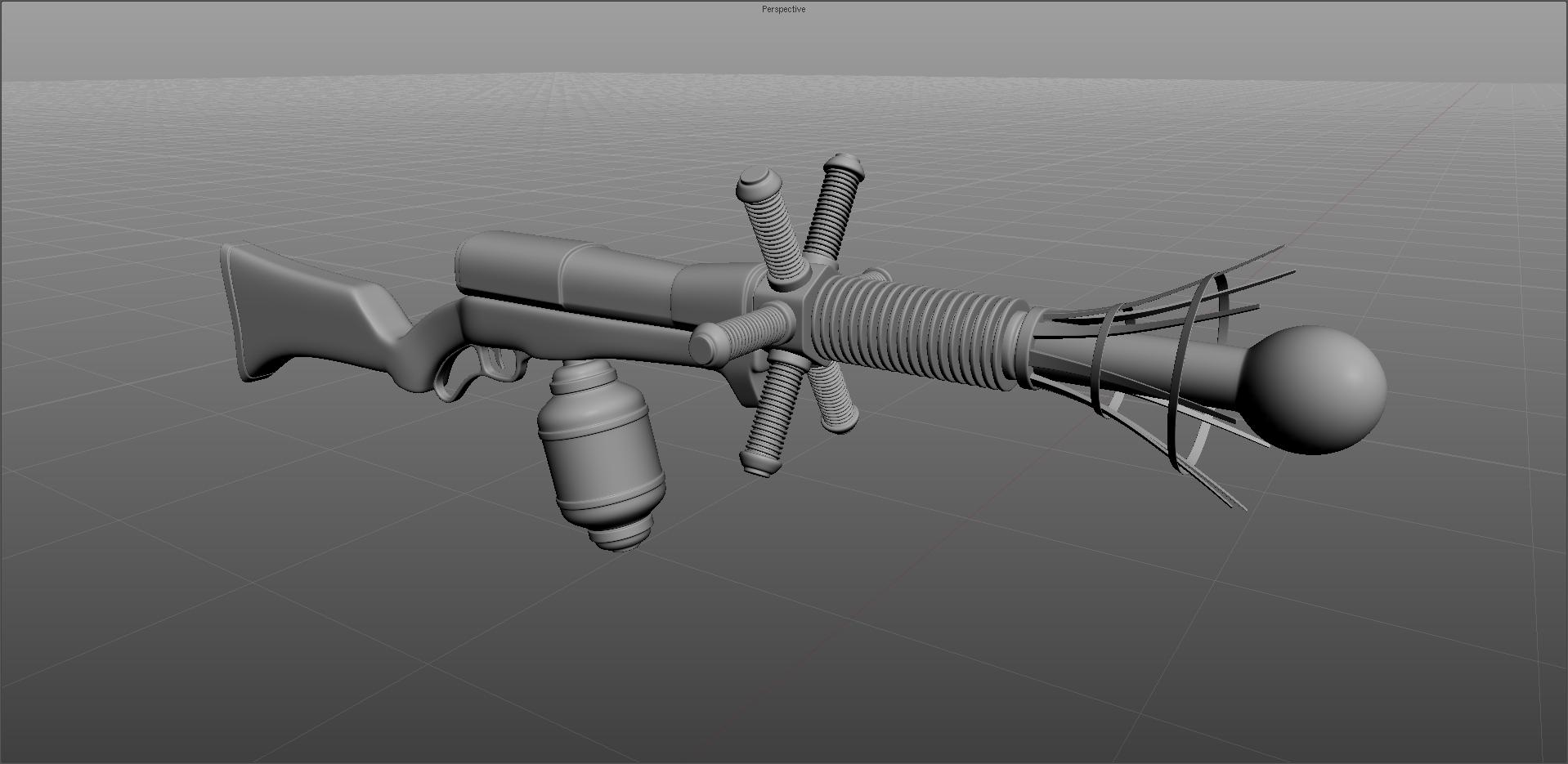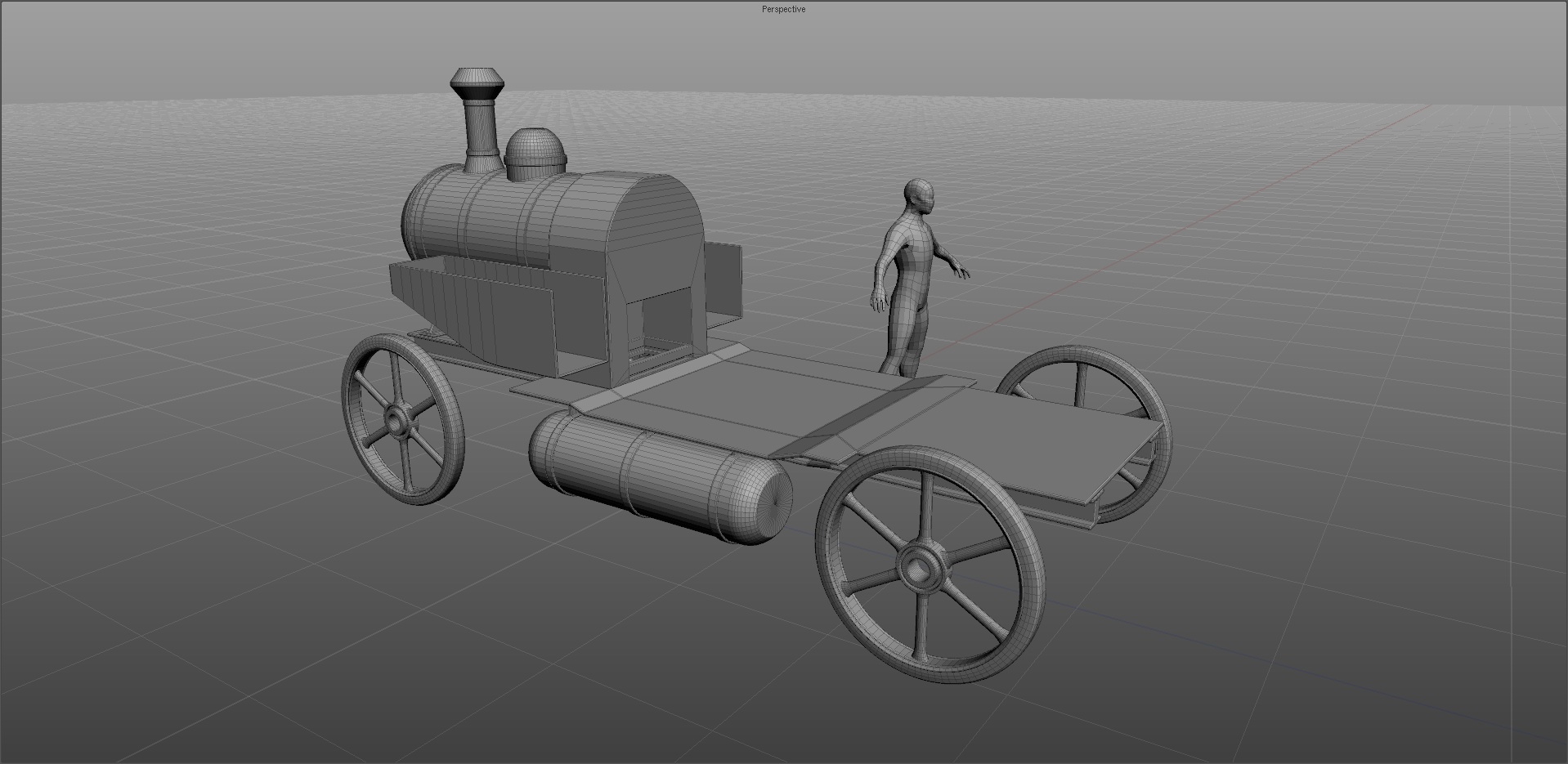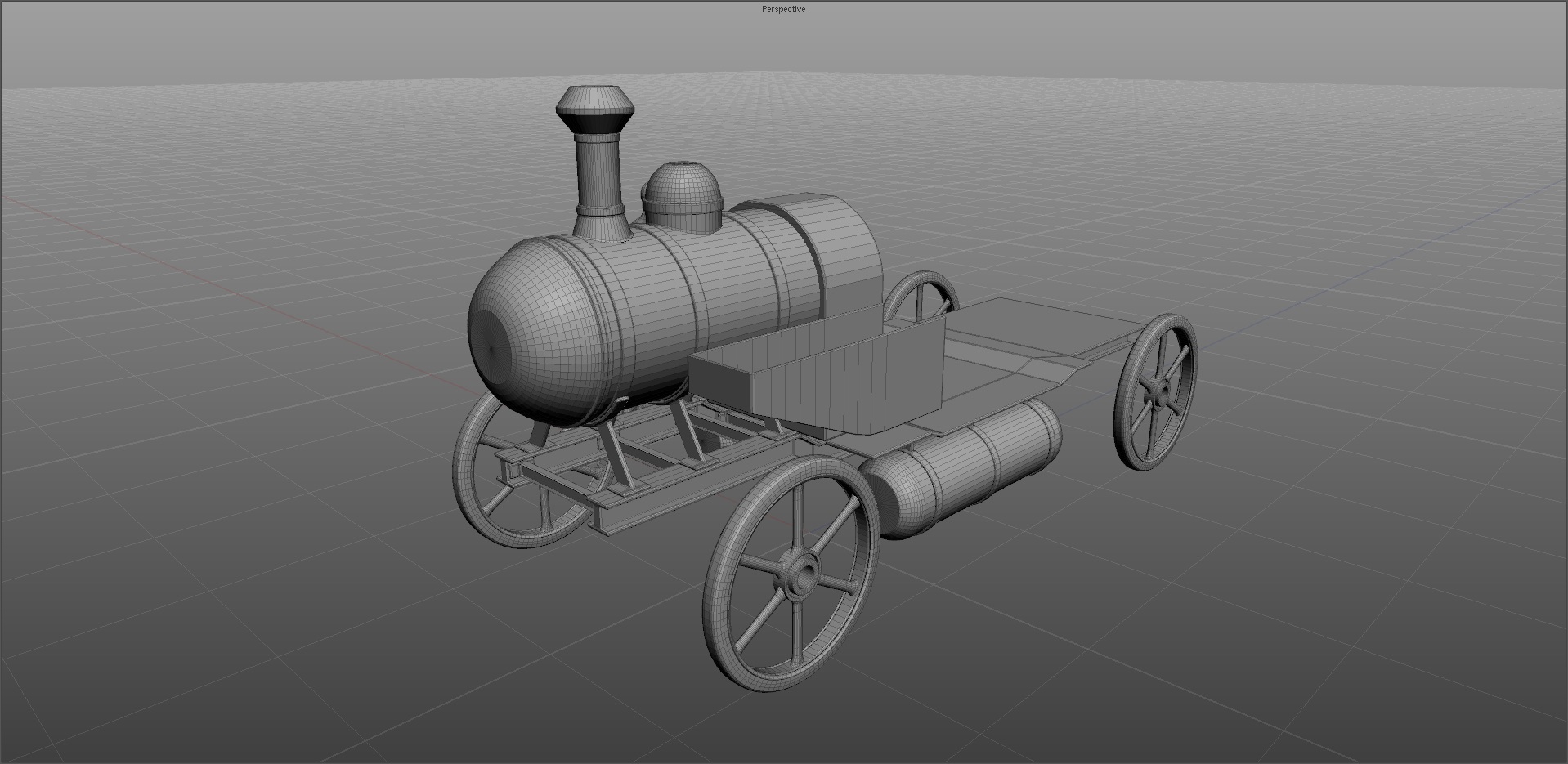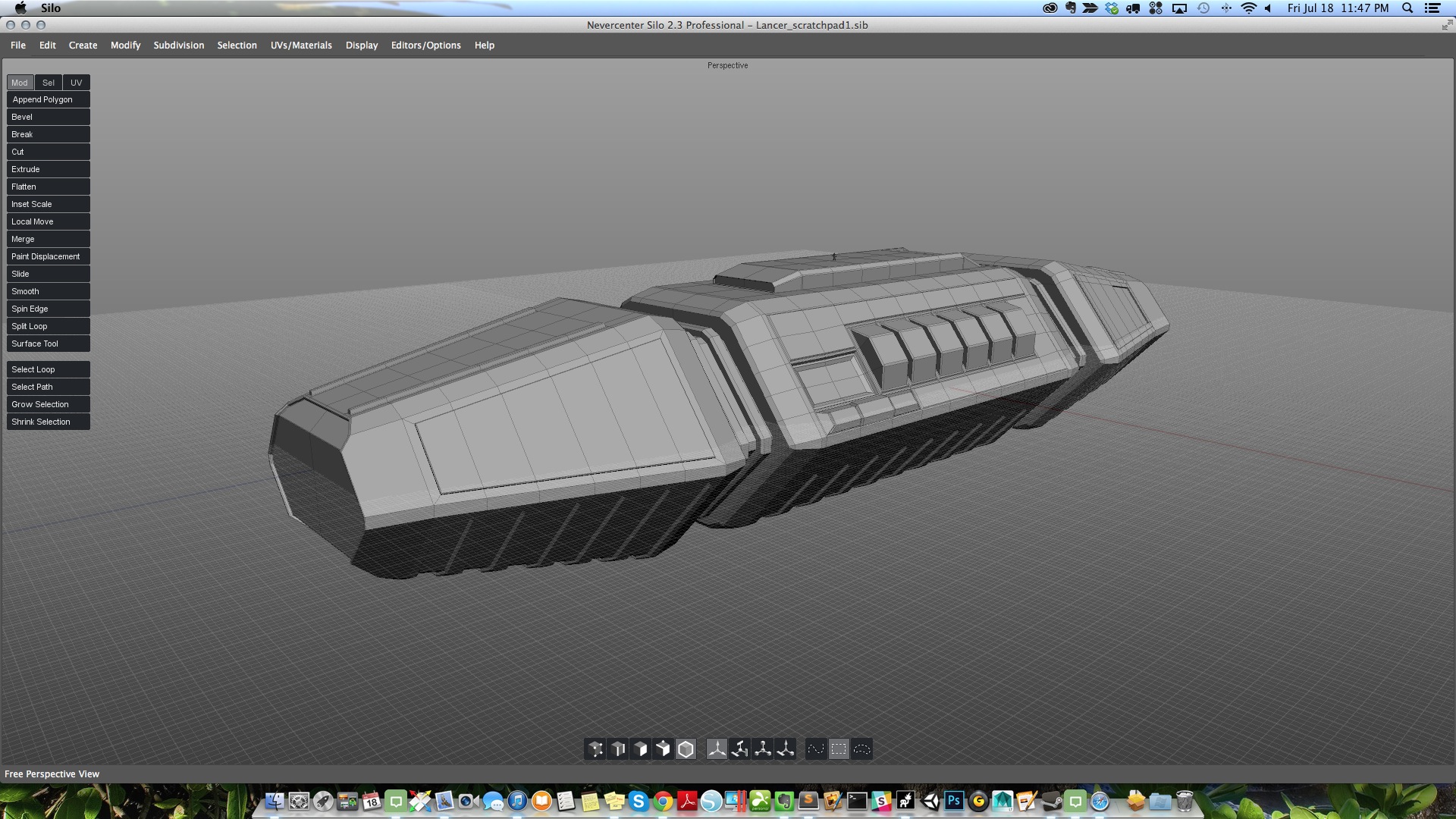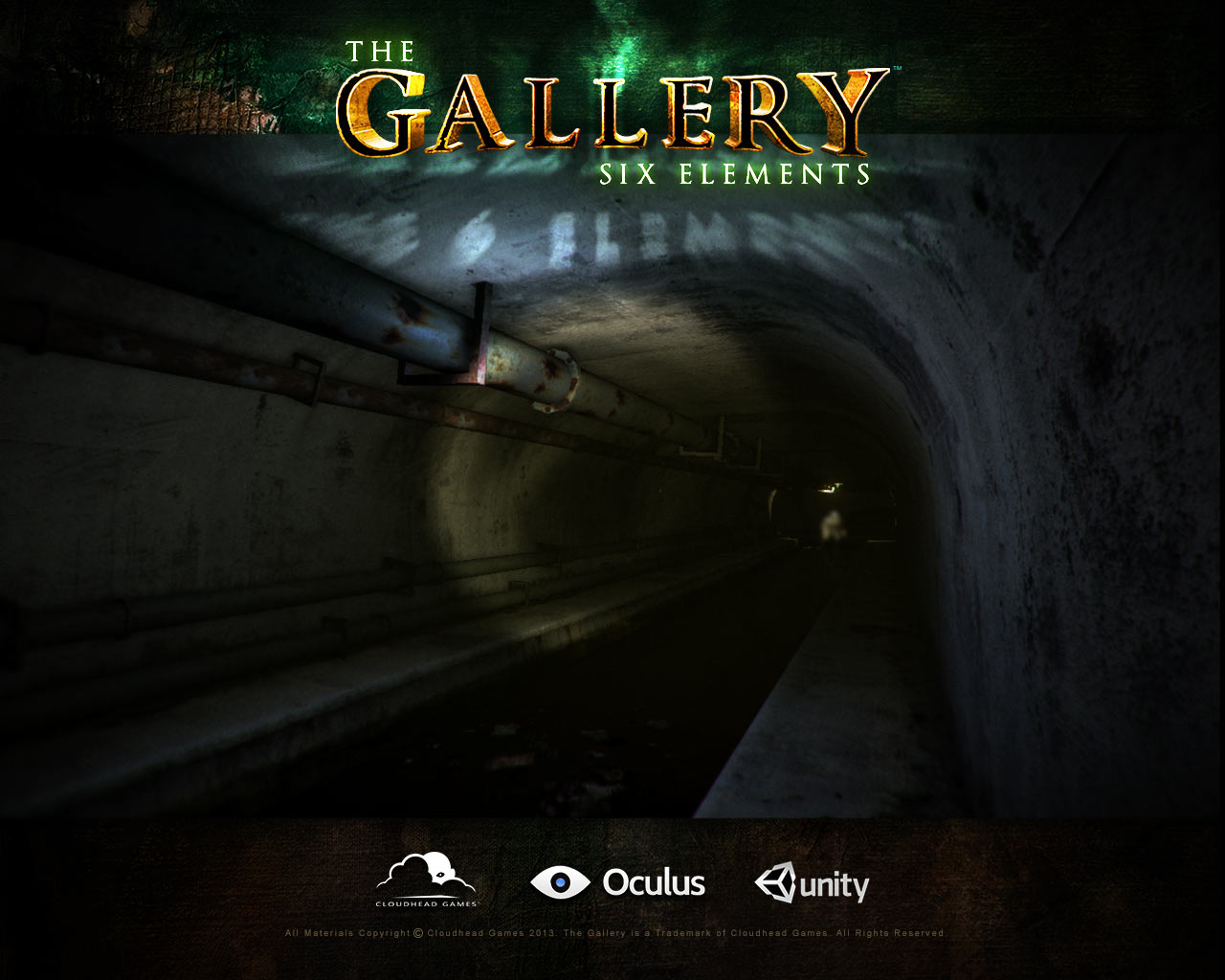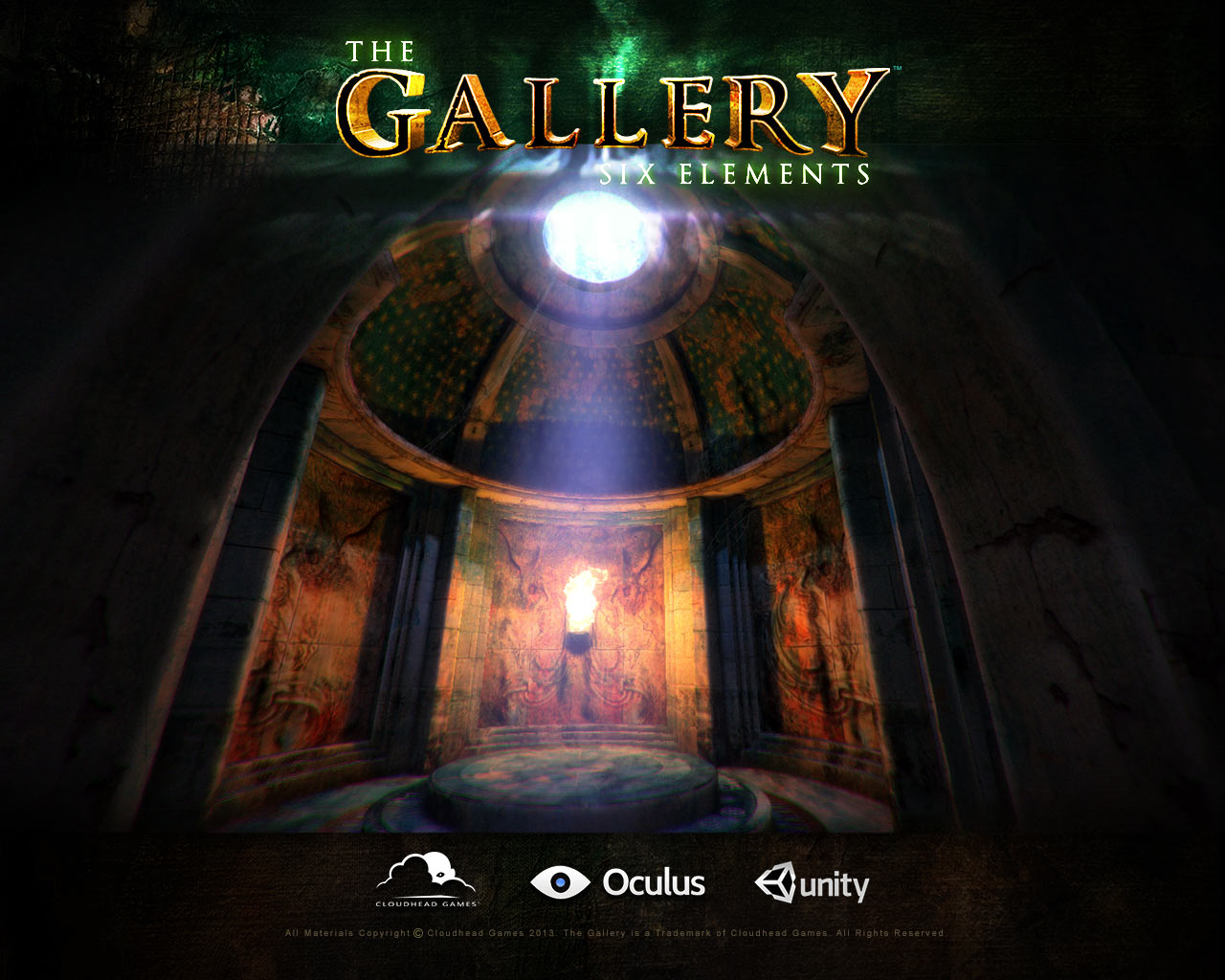I’ve been on a kind of weird retro-SF kick lately, with the steam car from the previous blog post and also having worked on a Tesla-themed VR interaction demo for some folks from Valve Software last week. That was fun–I’d come up with an all-new motion-based interaction system for first person VR for the game we were working on, and I had a little experimental scene with various bits and bobs in it that I was using to develop the interactions further. When we heard that a couple guys from Valve were coming to visit the Cloudhead office the following week, we cleaned up my test scene and I prototyped a new set of interactions based around some models that Matt Lyon and I whipped up with a sort of mad scientist laboratory theme in mind.
I revisited the steam car model this weekend with the intention of modeling the feedwater condenser on the front, but I’d forgotten how to do coils in Silo and had to look it up. I got a little carried away while messing around with the Path Extrusion and Arc tools, and ended up with the beginnings of some kind of Tesla-ish rifle. 😆
I figured that while I was at it, I might as well practice working on different shapes and see how far I got over the weekend. It still needs more detail work, but I’ll revisit that later. Once it’s done, I’m gonna stick it on the steam car somewhere like a shotgun in a pickup truck.
Now that I’ve refreshed my memory on how to do coiled structures in Silo, I’m hoping to be able to resume work on the steam car’s feedwater condenser system and the plumbing that connects it to the feedwater tanks next weekend.

